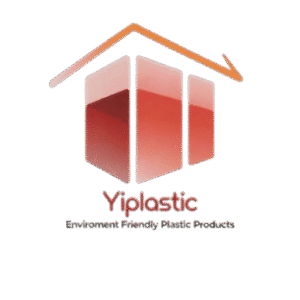Consider polycarbonate roofing if you’re seeking an exceptionally lightweight and affordable roofing material. This thermoplastic roofing material was initially used on conservatories before being expanded to commercial structures. However, as a result of its characteristics, it is gaining traction in residential settings as well.
Polycarbonate roofing comes in two basic varieties. Both materials are thermoplastic and are exceptionally robust, moldable, shatterproof, lightweight, and resistant to a wide range of temperatures. The distinctions are in their look and installation methods.
Roofs Made of Transparent Polycarbonate
The most common application of clear polycarbonate roofing is on conservatory roofs. The panels are transparent or translucent and resemble glass. They can be completely transparent or tinted in a variety of hues to assist reduce the amount of light that enters. They nearly always have a protective film layer on top that aids in UV light filtering.
Apart from conservatory roofs, clear polycarbonate roofing is gaining popularity as a replacement material for any roof that normally has glass, such as:
- Greenhouses
- Solariums
- Sunrooms
- Porches that face the sun
- Patio-style rooms
The primary advantage of clear polycarbonate roofing is that it is both lightweight and durable. Because conservatories and similar spaces are mostly composed of lightweight glass walls, they frequently cannot hold a hefty roof without leaking or cracking. Polycarbonate roof panels are impervious to leakage and cracking, and are typically less expensive than glass panels.

Polycarbonate Roofing With a Foam Backing
The other form of polycarbonate roofing material is foam-backed polycarbonate roofing, which is more commonly used on commercial buildings but is gaining popularity in more residential buildings. This corrugated roof panel resembles a metal roof but is significantly lighter in weight.
The foam backing of the panels contributes to the building’s insulation, while the protective covering deflects UV rays. As a consequence, you’ll have a roof that helps maintain a consistent temperature throughout the year by inhibiting heat movement in both directions.
Additionally, foam-backed panels are significantly less expensive than metal corrugated panels, allowing you to achieve the same look at a fraction of the cost. The panels are available in a variety of thicknesses and colors, making them suitable for a variety of different dwellings.
Additionally, this form of roofing can be put on flat and low-slope roofs. Homeowners seeking an alternative to typical rolled or asphalt roofing may consider polycarbonate roofing as well.
Longevity
Both forms of polycarbonate roofing have a lifespan of between ten and twenty years. Certain manufacturers, on the other hand, warrant their items for the life of the home. Because this is a relatively new product, some insufficient homes and buildings have utilized it for more than two decades to determine whether it would endure as long as the rest of the home.
A Versatile Selection
Many people are discovering that polycarbonate roofing may be utilized for outdoor patios and other applications where a glass roof would normally be used. Additionally, more people are opting for corrugated roofing over metal and rolled roofing. As its popularity grows, additional information on its durability may become available. In the meantime, many homeowners find polycarbonate roof panels to be an affordable solution.
What is the maximum weight that a corrugated roof can support?
The California building code establishes minimum load-bearing capacity limits for roofs. Any roof that may be used by maintenance personnel must hold a minimum of 300 pounds concentrated. Concentration refers to the fact that this weight can be supported by any single point on the roof.
Am I permitted to walk on corrugated plastic?
Never walk on polycarbonate roofing unless it is adequately supported beneath. While polycarbonate roofing may withstand a great deal of harm, it is not designed to support human weight. The surface is quite slick, and you will almost certainly tumble. Additionally, if you step on it, it can dent and scratch.
What advantages does corrugated plastic roofing offer?
Several advantages of polycarbonate roofing include the following: Nearly Unbreakable High-Quality Bullet-Proof Lightweight UV-Resistant Ideal for Greenhouses Extreme Temperature Resistant Protects Against Discoloration
What are the applications for corrugated plastic sheets?
Corrugated plastic can also refer to wave-like plastic sheets that may be reinforced with chopped glass fiber. They are single-layer sheets that are primarily used to roof garages and outhouses, although gardeners also use them to construct huts.
What exactly is recycled plastic?
Plastic Corrugated. Corrugated plastic is an extruded material that resembles corrugated paper in appearance. Fluted ribs support both the upper and bottom surfaces.
- Containers for Recycling. Our corrugated plastic recycling bins can be used to assist in the fight against global warming! Melmat can build corrugated plastic recycling bins and containers to your specifications.
- Providing design services. Our design team employs methods that help our clients save money and time. We begin by conversing with you and gaining an understanding of your specific requirements.
What material is a corrugated roof made of?
Corrugated metal panels are often constructed from thin-gauge steel (29 or 26 gauge), which makes them both economical and practical for covering huge portions of roofing surfaces. Corrugated metal roofing is made of corrugated metal, which is formed into parallel folds that alternate between grooved and ridged appearances.
Conclusion
Polycarbonate is excellent roofing material. Many people are replacing the glass with polycarbonate and plexiglass. They are certain to be sturdy and cost-effective, so take the plunge and make a sound roofing choice.

